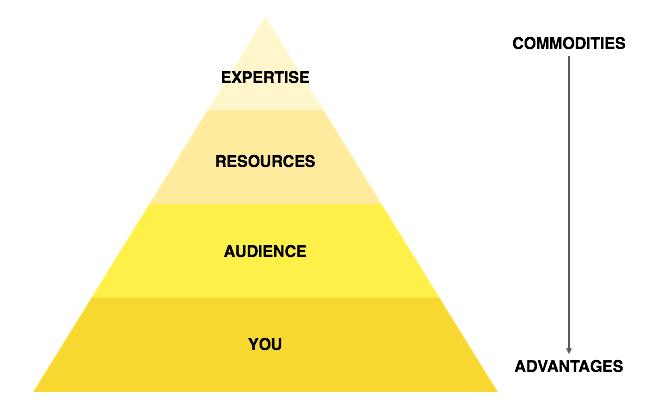It’s impossible to do exceptional work if you stop with the first “right” answer. To BE exceptional, the way you THINK must be exceptional.
Albert Einstein famously said that the problems we face cannot be solved at the same level of thinking we were at when we created them. Most people will look at that quote, and say to themselves, “Yeah – that makes sense.”
But they’ll miss the vital truth that hides within it: If you brainstorm ideas the way everyone else does – jumping on the first apparently good idea you come up with – you’ll be a pretty weak problem solver. Here’s why:
When you’re brainstorming, the first ideas your brain produces are the “low-hanging fruit” – the easy, obvious and low-value ideas. They may be best practices, culled from your experience, something you’ve read or from so-called subject matter experts.
 Most people will stop there, when they arrive at what appears to be THE first “right” answer. But as Jay Acunzo points out in his recent post, The Great Lie We’re Told About Doing Exceptional Work, THE idea is typically low in value and tends to become outdated quickly – especially during times of rapid change:
Most people will stop there, when they arrive at what appears to be THE first “right” answer. But as Jay Acunzo points out in his recent post, The Great Lie We’re Told About Doing Exceptional Work, THE idea is typically low in value and tends to become outdated quickly – especially during times of rapid change:
“To be exceptional, you have to be an exception. And the good news is, every individual, every team, and every situation IS an exception. But you have to make that the foundation of your work. You have to trust that reality. You have to USE THAT in your work.”
The first right answer is NOT exceptional. Far from it. On the contrary, it’s “safe.” It’s incremental. It fits in with “how we do things around here.” And, chances are, it will make little or no impact on the problem or challenge at hand.
By all means, capture that superficially promising first idea – but then you MUST keep going. You must DIG – DEEP. Creativity experts recommend brainstorming for at least 30 minutes, with a goal of 50 ideas.
You must plow through this “chaff” – the low-value, obvious ideas – to get to the high-value, high-impact ones that lie at the periphery of your thinking.
As you continue to brainstorm, your ideas will become more and more unusual, even outrageous. Write them all down. Don’t give in to the temptation to dismiss your “crazy” ideas, just because they don’t seem to have any immediate value. Just capture them.
Some of those “crazy” ideas may become stepping stones to exceptional ideas that will elegantly solve your creative challenge.
So if you want to be exceptional, keep pushing. Explore the periphery of your thinking. Embrace the crazy ideas – not as something you’ll implement, but as idea seeds, building blocks that you can improve, combine and morph into valuable and practical solutions.
There is no “easy button” for this type of creative thinking.
Stopping with the first promising idea, THE idea, is lazy thinking. Invest the time to persist, at least 30 minutes at a time. Your goal is to have multiple promising ideas from which you can choose.
I wish you well on your idea hunts!

